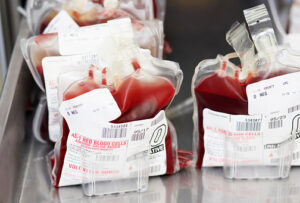With blood shortage concerns from the COVID-19 pandemic, blood products are now more than ever a precious commodity. A recent study published in Blood Advances examined the prevalence, causes, geographic patterns, and the impact of blood recalls in the United States. From January 2013 to December 2017, researchers used data extracted from the U.S. FDA’s weekly enforcement reports and AABB’s blood survey data, and identified a total of 4,700 blood product recall events affecting 144,346 units of blood. The most common reasons for recall were donor-related screening errors (64%; 92,382 units) and breaches of sterility at blood collection and processing facilities (15.5%; 22,408 units). Recalls for plasma frozen within 24 hours and leukoreduced RBCs affected the highest number of units (58% and 21%, respectively). Based on geospatial mapping, hot spots for recalls were identified in Southern California, Arizona, and parts of Florida. Many of the recall errors could be corrected with careful attention to details. However, it should be noted that the robustness of the U.S. blood supply chain is strong; no life-threatening Class I recall events were identified. It is unclear how the recent changes to the FDA’s blood eligibility guidelines due to the COVID-19 public health emergency will affect blood product recalls, but donor-related screening eligibility recalls may hopefully decrease.
- Alqemlas I, Shanker S, Handagama W, Felse PA. A cross-sectional study of prevalence, distribution, cause, and impact of blood product recalls in the United States. Blood Advances 2020; 4(8): 1780-1791
- FDA Guidance for Industry. Alternative procedures for blood and blood components during the COVID-19 public health emergency.
- FDA Guidance for Industry. Recommendations to Reduce the Possible Risk of Transmission of Creutzfeldt-Jakob Disease and Variant Creutzfeldt-Jakob Disease by Blood and Blood Components.
- FDA Guidance for Industry. Revised Recommendations for Reducing the Risk of Human Immunodeficiency Virus Transmission by Blood and Blood Products.
- FDA Guidance for Industry. Revised Recommendations to Reduce the Risk of Transfusion-Transmitted Malaria.

